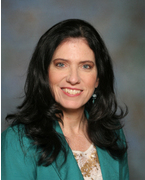
We recently interviewed Cindi Chang (she/her), Assistant Director at the Nevada Department of Education and an active CSTA member. Cindi is also currently serving as a member of the CSTA Board of Directors.
Full Story
 We recently interviewed Cindi Chang (she/her), Assistant Director at the Nevada Department of Education and an active CSTA member. Cindi is also currently serving as a member of the CSTA Board of Directors.
We recently interviewed Cindi Chang (she/her), Assistant Director at the Nevada Department of Education and an active CSTA member. Cindi is also currently serving as a member of the CSTA Board of Directors.How long have you been involved in the CSTA?
I was one of the founding members of our Silver State Chapter here in Nevada several years back. At the national level, I have been a member of the Board of Directors as the State Department Representative for two years this coming July.
What motivates you to be involved with CSTA?
I have a sincere passion for computer science education. I came from industry originally and I understand the skills gap in computer science that our students are facing when they graduate from high school and enter the workforce. Having just one semester or more of coursework, and not until high school if they’re lucky, is not preparing them for the digital world they live in. It must start with our youngest students to build that necessary digital foundation. I have a passion for building community and serving that community. The CS community is so giving, welcoming, and supportive. I love being a part of it and doing what I can to support others on their CS journey, wherever they may be on that path.
What have you learned that’s most interesting to you about K-12 CS Education?
K12 Computer Science education is still in its infancy for our teachers, especially at the elementary level. It is so important to provide that extra training and support to build our teachers’ self-efficacy around the subject, give them a “toolbox” from which to pull when instructing students at the various levels, all while providing training and a “teacher toolbox” to support their own knowledge building.
CSTA does a phenomenal job at providing teacher and administrator training throughout the year, with multiple opportunities for growth and community building through affinity groups and conferences, chapter attendance, and tools such as “PD-in-a-Box” for leaders. I have learned that being among OTHER passionate CS Ed folks provides the catalyst to develop resources at a faster pace to broaden the expansion of computing in our schools.
What do you hope for CS education in the future? How do you believe CSTA will help in achieving this?
My hope is that computer science and computational thinking become an integral part of our K-12 system of education. This is extremely important in today’s world. Our students must become prepared with these skills to be college and career-ready, opening doors to numerous opportunities, especially for our female and underserved student populations where doors have remained shut for so long in this field, thus impacting many generations over time. CSTA is beautifully positioned to support our state leaders, policymakers, administrators, and educators – all stakeholders who impact teaching and learning – in preparing our teachers to teach CS, our leaders to promote and champion CS education in their schools, and our policymakers to support legislation on behalf of our students. It all begins with supporting teachers. And that is exactly what we do at CSTA.
What else would you like to add that might be interesting to readers about you, your commitment to CSTA, or perhaps why others should also be interested in becoming involved?
I always told my own children, “There is strength in numbers”. We need folks to become involved in CSTA, whether at your chapter level or at the national level. There are Board of Director positions that come up frequently at the national level, but there are also affinity groups, standards and resource development committees, conference planning teams, and so much more that you can be a part of. Participating in this work is a way to leave your legacy in computer science education and support our students well beyond our roles as educators in the classroom. And it could quite well be life-changing for them and for you.
